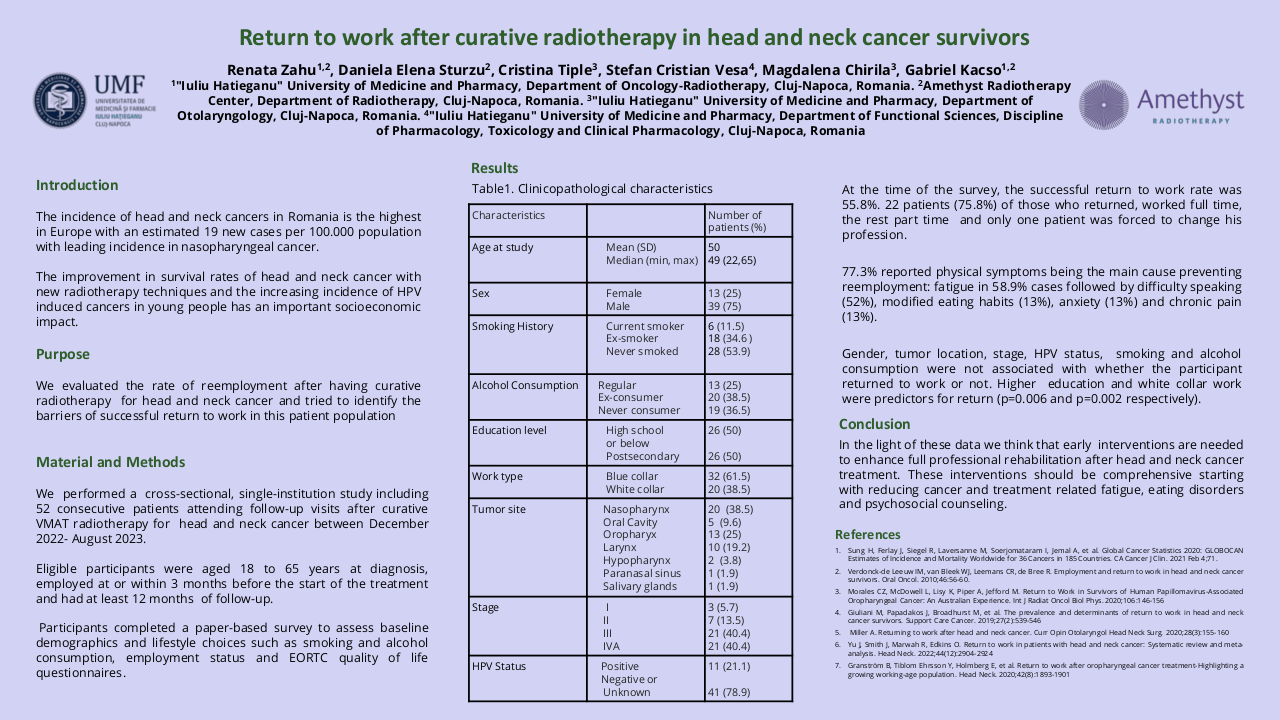Factors Affecting the Longevity of Voice Prosthesis after Total Laryngectomy
Purpose/Objective
The most disabling sequela of total laryngectomy is loss of voice. Tracheoesophageal puncture with insertion of a voice prosthesis provides speech rehabilitation and recovery for these patients, although it is not free of complications or inconveniences such as frequent prosthesis replacement. The aim of our study is to identify whether there are factors that influence a greater frequency of voice prosthesis replacement in laryngectomised patients.
Material/Methods
We retrospectively reviewed data from a total of 45 laryngectomised patients in two hospitals with Provox Vega voice prostheses. The dependent variable chosen was the annual change of prosthesis and the independent variables were: treatment with radiotherapy or chemotherapy previous to surgery, date of surgery, radiotherapy +/- chemotherapy after surgery, type of surgery: simple total laryngectomy (STL), total laryngectomy with pharyngectomy (FTL), total laryngectomy with extension to first tracheal rings (TLT) - mostly due to previous tracheostomy -, the type of prosthesis placement (primary or secondary).
Results
The mean number of prosthesis replacements per year per patient was 3.9 replacements/year (range 1-14), with a median of 4 replacements/year, and a mean lifetime of three months. The only variable that was significantly related to less prosthesis change was TLT (2.7 changes/year), compared to STL (4.3 changes/year) and FTL (4.9 changes/year) (p<0.05). The other variables were not significantly related to more or less prosthesis changes.
Conclusion
The voice prosthesis is useful and in our study its useful life is about 3 months in laryngectomised patients regardless of the previous or subsequent treatment received, the date of surgery or the type of fitting. However, the type of surgery may influence the duration of the prosthesis, with TLT showing the best results.
Lewin JS, Baumgart LM, Barrow MP, et al. Device Life of the Tracheoesophageal Voice Prosthesis Revisited. JAMA Otolaryngol Head Neck Surg. 2017 Jan 1;143(1):65-71. doi: 10.1001/jamaoto.2016.2771.J R Shultz, J Harrison. Defining and predicting tracheoesophageal puncture success. Arch Otolaryngol Head Neck Surg. 1992 Aug;118(8):811-6. doi: 10.1001/archotol.1992.01880080033009.A. Krishnamurthy, S. Khwajamohiuddin. Analysis of Factors Affecting the Longevity of Voice Prosthesis Following Total Laryngectomy with a Review of Literature. Indian J Surg Oncol. 2018 Mar; 9(1): 39–45. doi: 10.1007/s13193-017-0700-zA. Serra, P. Di Mauro, D. Spartaro et al. Post-laryngectomy voice rehabilitation with voice prosthesis: 15 years experience of the ENT Clinic of University of Catania. Retrospective data analysis and literature review. Acta Otorhinolaryngol Ital. 2015 Dec; 35(6): 412–419.doi: 10.14639/0392-100X-680





